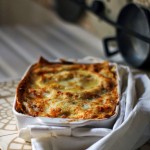[3], The Napoleonic Wars, the name for a succession of connected conflicts between the armies of the French Emperor Napoleon and his European opponents, were nine years old when the War of the Fifth Coalition ended in 1809. The 2nd and 3rd Divisions did not join in and the Austrians crossed the killing area, suffering some serious damage but no ships were lost. The Italian fleet headed by admiral Persano directed three divisions, himself having the main battle force with 9 ironclads, Albini, the “support” division used to support the landings operations and Admiral Vacca the reserve division composed of wooden ships (seen above). The fleets were composed of a mix of unarmoured sailing ships with steam engines, and armoured ironclads also combining sails and steam engines. A contemporary account is available in "The Engineer"May 15, 1885. http://www.gracesguide.co.uk/images/d/d4/Er18850515.pdf, For the Battle of Lissa fought in 1811, see, It has been pointed out the contradicting facts that the. At the last moment, von Petz turned into the ram, conducting a counter ram. The 1st division in the vanguard consisted of Principe di Carignano, Castelfidardo and Ancona under Admiral Vacca, Captain 1st Class Faà di Bruno's 2nd division in the centre consisted of Re d'Italia, Palestro and San Martino, and the 3rd division to the rear had the Re di Portogallo, Regina Maria Pia and, at the extreme rear, Varese under Captain Augusto Riboty. “E’ vero che i marinai della Ferdinand Max (una delle navi corazzate austriache della battaglia) salutarono l’affondamento del Re d’Italia (nave italiana) gridando – Viva San Marco ! The British ships suffered 190 killed or wounded in the battle and a number lost afterwards in the fire aboard Corona. She was scrapped between 1893 and 1895. Augusto Riboty of Varese was the namesake of an Italian destroyer leader launched in 1916 (and which survived both world wars, finally being scrapped in 1951). The Battle of Lissa, also known as the Battle of Vis; French: Bataille de Lissa; Italian: Battaglia di Lissa; Croatian: Viška bitka was a naval action fought between a British frigate squadron and a much larger squadron of French and Italian frigates and smaller vessels on Wednesday, 13 March on 1811 during the Adriatic campaign of the Napoleonic Wars. The raider was driven off by the remaining garrison of the town without the prize, while attempting to manoeuvre her out of the bay. The battle has been hailed as an important British victory, due to both the disparity between the forces and the signal raised by Hoste, a former subordinate of Horatio Nelson. Sources differ on the spelling of Gifflenga's first name, using Alexander and Alexandre interchangeably. In both cases he scored only glancing blows, but these caused serious damage, especially to Palestro, which was dismasted and set afire. [16] As he closed with Hoste's force, Dubourdieu realised that he would be unable to successfully cross Active's bow due to the British ship's speed, and would also be unable to break through their line due to the British ships' close proximity to one another. Captain Péridier had been seriously wounded in the action, and took no part in Flore's later movements. [4], To disrupt the preparations of this army, the British Royal Navy, which had controlled most of the Mediterranean since the Battle of Trafalgar in 1805, seized the Dalmatian Island of Lissa in 1807 and used it as a base for raiding the coastal shipping of Italy and Illyria. All’epoca della Battaglia di Lissa il suo ammiraglio di riferimento, Carlo Persano, fu incaricato di partire da Ancona alla volta della Croazia, con l’intento di affondare la flotta austriaca. Il 20 luglio 1866 a Lissa, un'isola dalmata nell'Adriatico, si affrontarono la flotta italiana e la flotta Austriaca. The battle occurred as part of the Third War of Italian Independence, in which Italy allied with Prussia in the course of its conflict against Austria. Despite being a perfect target for a ram, Kaiser survived when Persano ordered Affondatore to turn away. Nella prima battaglia di Lissa nel 1811, le truppe del Regno d'Italia sono composte anche da numerosi militari friulani. [27][30] At Port St. George, the Venetian gunboat Lodola sneaked unnoticed into the harbour and almost captured a Sicilian privateer, Vincitore. Faà di Bruno of Re d'Italia was the namesake of an Italian armored gunboat launched in 1868 and a monitor launched in 1916. Tegetthoff, seeing a gap opening between the 1st and 2nd Divisions, forced his fleet into it and concentrated on raking the Italians and ramming. [10][30] The French at Lesina did not respond to Hoste's note, and the British squadron was eventually forced to return to Lissa to effect repairs. La battaglia di Lissa - 1866 La battaglia di Lissa - 1866. A participant to the battle explained this as being due to, Learn how and when to remove this template message, "The Italian "mistakes" in Lissa battle (in Italian)", "BLKÖ:Moll, Heinrich Freiherr von – Wikisource", http://www.gracesguide.co.uk/images/d/d4/Er18850515.pdf, Page of the Italian Navy official site on Affondatore, Page of the Italian Navy official site on battle of Lissa, International Security Assistance Force (ISAF), United Nations Disengagement Observer Force (UNDOF), https://en.wikipedia.org/w/index.php?title=Battle_of_Lissa_(1866)&oldid=1000123997, Naval battles of the Third Italian War of Independence, Articles lacking in-text citations from July 2012, Articles containing Croatian-language text, Articles with Italian-language sources (it), Creative Commons Attribution-ShareAlike License. The Austrians were also severely outmatched in rifled guns (276 to 121) and total weight of metal (53,236 tons to 23,538 tons). This movement threw the Franco-Venetian squadron into confusion and as a result the squadron's formation became disorganised. -. The 3rd Division consisted of the smaller screw gunboats and armed merchantmen. [30] In surrendering and then escaping, the officers of Flore had breached an informal rule of naval conflict under which a ship that voluntarily struck its flag submitted to an opponent in order to prevent continued loss of life among its crew. La battaglia di Lissa nella storia e nella leggenda; la verità sulla campagna navale del 1866 desunta da nuovi documenti e testimonianze. La battaglia di Lissa nella storia e nella leggenda: la verità sulla campagna navale del 1866 desunta da nuovi documenti e testimonianze (Italian Edition) [9] The island had been left in the command of two midshipmen, James Lew and Robert Kingston, who withdrew the entire population of the island into the central mountains along with their supplies. In the absence of Montagu, Hoste's squadron consisted of three frigates (one of 38 guns and two of 32 guns) and one 22-gun post ship. La Voce del Popolo E L'Ammiraglio Persano Alla Battaglia Di Lissa: Parole...: Lorenzini, G F: Amazon.sg: Books [27] Hoste sent a punt to take possession of Bellona but due to the damage suffered was unable to launch a boat to seize Flore. Austria, humbled by Prussia and bullied by Napoleon III of France, agreed to cede Venetia to Italy despite the overall failure of the Italian war effort. The impact tore off Kaiser's stem and bowsprit, leaving her figurehead embedded in Re di Portogallo. [8] Tegetthoff's victory was saluted by his mariners – mainly Croats and Venetians, from Venetia, Istria and Dalmatia – with the traditional Venetian cry of victory: "Viva San Marco!" Sandler, Stanley. While the Austrians were approaching, Vacca's 1st Italian Division threw a heavy weight of fire at them. During World War II, an Italian submarine with his name was sunk in 1940 near Scotland. According to a tradition dated at least to the time of Virgil's Aeneid and to Livy's Ab Urbe Condita, Padua was founded around 1183 BC by the Trojan prince Antenor.. After the Fall of Troy, Antenor led a group of Trojans and their Paphlagonian allies, the Eneti or Veneti, who lost their king Pylaemenes to settle the Euganean plain in Italy. Two British midshipmen left in command of the town organised the British and indigenous population into a defensive force and marched to meet Gifflenga. Casualties of the action were heavy on both sides. Seeing things going badly, Persano decided to ram the unarmoured screw battleship Kaiser rather than one of the armoured ships engaged with the Italian 2nd Division much nearer him. [32] Problems were also experienced aboard Bellona, where Captain Duodo planned to ignite the powder magazine and destroy the ship following its surrender. Padua claims to be the oldest city in northern Italy. The Battle of Lissa (sometimes called Battle of Vis) took place on 20 July 1866 in the Adriatic Sea near the Dalmatian island of Lissa ("Vis" in Croatian) and was a decisive victory for an outnumbered Austrian Empire force over a numerically superior Italian force. [15] Dubourdieu planned to overwhelm Hoste's frigate squadron and then invade and capture the island, which would eradicate the British threat in the Adriatic for months to come.[16]. In manchen Staaten könnte dies rechtlich nicht möglich sein. This aggravated a number of incidents of ships being sunk by their squadron-mates in accidental collisions. According to legend, her captain shot himself after giving the order to strike the colours. This meant that he allowed his T to be crossed. Share Followers 2. [18] Amphion found herself caught between the two frigates and this slowed the British line enough that the French eastern division, led by Danaé, was able to strike at HMS Volage, now the leading British ship after overtaking Cerberus during the turn. It was the first major sea battle between ironclads and one of the last to involve deliberate ramming. The Battle of Lissa (or Battle of Vis) (Croatian: Bitka kod Visa) took place on 20 July 1866 in the Adriatic Sea near the Dalmatian island of Vis (Lissa in Italian) and was a significant victory for an Austrian Empire force over a numerically superior Italian force. Dies gilt weltweit. The officer promised to do so, but instead handed control of the magazine to the British prize crew when they arrived. La battaglia di Lissa nella storia e nella leggenda: la verità sulla campagna navale del 1866 desunta da nuovi documenti e testimonianze (Italian Edition) [Lumbroso, Albert] on Amazon.com. [26] During this combat, the small ship Principessa Augusta fired on Amphion from a distance, until the frigate was able to turn a gun on them and drive them off. SMS Lissa, an Austro-Hungarian broadside ironclad, was launched in 1869 and named in honor of the battle of Lissa. [31], In the seas off Lissa, British prize crews were making strenuous efforts to protect their captures; Corona was heavily on fire in consequence of her engagement with Active and the British prize crew fought the blaze alongside their Italian prisoners. Datum: 2006: Quelle: Eigenes Werk: Urheber: Rocco Pier Luigi: Genehmigung (Weiternutzung dieser Datei) Public domain Public domain false false: Ich, der Urheberrechtsinhaber dieses Werkes, veröffentliche es als gemeinfrei. Dubourdieu's squadron was spotted approaching the island of Lissa at 03:00 on 12 March 1811 by Captain Gordon in HMS Active, which had led the British squadron from Port St George on a cruise off Ancona. By 10:43 am the Austrians had brought the Italian van to close action. La Voce Del Popolo E L'ammiraglio Persano Alla Battaglia Di Lissa: Parole... (Italian Edition) [Lorenzini, G. F.] on Amazon.com. This exchange continued until the arrival of Active caused the Danaé, Corona and Carolina to sheer off and retreat to the east. [11] The French and Italians burnt several vessels in the harbour and captured others, but remained on the island for no more than seven hours, retreating before Hoste returned. With the confusion in the Italian van, Kommodor von Petz took the opportunity to take his 2nd Division to the Italian rear and fall on their 3rd Division. [38] The action had significant long-term effects; the destruction of one of the best-trained and best-led squadrons in the French Navy and the death of the aggressive Dubourdieu ended the French ability to strike into the Balkans against the Ottoman Empire. These operations captured dozens of ships and caused panic and disruption to French strategy in the region. Per i … The French invasion force under Bernard Dubourdieu was met by Captain William Hoste and his four ships based on the island. George. The fort on the island of Lissa was under the command of Oberst David Urs de Margina, an ethnic Romanian from Transylvania. Egregio Signor Sindaco, a Lissa il 20 luglio 1866 gli eredi della Serenissima (veneti, istriani e dalmati) ossatura della marina asburgica sconfissero clamorosamente la marina italiana che tanto baldanzosamente aveva affrontato la battaglia, forte della propria superiorità di uomini e di mezzi. Battle of Lissa … [9] By 15:00, Tegetthoff had led his fleet into the harbour of Lissa, where the damaged Kaiser had already arrived, undisturbed by the Italian ships; despite Persano's orders to engage the Austrian vessels, both Albini and Vacca ignored the orders, as the latter candidly testified at Persano's trial. [7] To counter this, the French government started a major shipbuilding programme in the Italian seaports, particularly Venice, and despatched frigates of their own to protect their shipping. Associated University Presses, Lexington, KY, 1979. Dubourdieu possessed not only a significant advantage in ships but also in men, the Italian soldiers aboard giving him the opportunity to overwhelm the British crews if he could board their frigates successfully. The ships are ordered in the sequence in which they formed up for battle. Read this book using Google Play Books app on your PC, android, iOS devices. This put an 18 ft (5.5 m) hole below Re d'Italia's waterline, and she struck her colours and sank two minutes later. Once Flore was clear of the British squadron she headed for safety, reaching the batteries of Lesina shortly after her Carolina and Danaé and ahead of the limping British pursuit. Dubourdieu hoped to pass ahead of Active at the head of the British line and cross it further east with Danaé, which led the leeward division. Because Persano was in the process of transferring his flag, no general order was given. Amphion then attacked Bellona and in an engagement that lasted until 12:00, forced the Italian ship's surrender. Flore had been able to pass unmolested through the British squadron only because she was recognised to have surrendered, and to abuse this custom in this way was considered, in the Royal Navy especially, to be a dishonourable act. Piedmontese Count Carlo di Persano commanded the Italian fleet, while the Austrian fleet was commanded by Konteradmiral Wilhelm von Tegetthoff. Il 5 gennaio del 1913, la marina ellenica guidata dall'ammiraglio di Hydra, Pavlos Kountouriòtis, a bordo della sua leggendaria Averoff*, sconfisse la marina ottomana al largo dell'isola di Lemno. The Treaty of Schönbrunn that followed the war gave Napoleon possession of the final part of Adriatic coastline not under his control: the Illyrian Provinces. Three of his ships were from the French Navy, and the others from the Navy of the Kingdom of Italy. [24], Behind Volage and Danaé, the Venetian Corona had engaged Cerberus in a close range duel, during which Cerberus took heavy damage but inflicted similar injuries on the Italian ship. Persano, now on the most powerful warship in either fleet, Affondatore, stayed clear of the engagement.[6]. [11][12] Tegetthoff returned home a hero, was promoted Vizeadmiral, and is considered one of the greatest naval commanders in Austrian history. This video is unavailable. The junior British officers informed Gifflenga that the return of the British squadron would bring overwhelming numbers of sailors, marines and naval artillery to bear on his small force and that if he surrendered immediately he could expect better terms. Instead, the British and French frigate squadrons engaged in a campaign of raids and counter-raids during 1810. The engagement was fought in the Adriatic Sea for … The Austrian plan, due to their weaker firepower, was to close quickly into a melée, and to use close range fire and ramming to sink a small portion of the Italian fleet, thereby breaking the Italian will to fight. The other (wooden) ships were dispersed into the battleline. La battaglia di Lissa fu teatro dell'ultima vittoria navale degli equipaggi della Serenissima. Hoste was furious at the behaviour of Flore's officers and sent a note into Lesina demanding that they give up the ship as indicated by its earlier surrender. The Italian defeat was overshadowed by the crushing Prussian victory over the Austrian Army at Königgrätz. Taking advantage of the temporary absence of Montagu, Dubourdieu assembled six frigates and numerous smaller craft and embarked over 500 Italian soldiers under Colonel Alexander Gifflenga. The frigates engaged in combat at 13.45, Active forcing Corona's surrender 45 minutes later after a fire broke out aboard the Italian ship. The Italian fleet of 12 ironclads and 17 unarmoured ships outnumbered the Austrian fleet of 7 and 11 respectively. It was the first major sea battle between ironclads and one of the last to involve deliberate ramming. The first was made of the ironclads, the second was made of unarmoured wooden vessels, like ship of the line SMS Kaiserand 5 large frigates. Taking heart from his admiral, the captain of Re di Portogallo laid heavy fire on Kaiser with his rifled guns. Vessels are ranked by fighting power (most powerful first). This page was last edited on 13 January 2021, at 22:55. In total, the Italians had 11 ironclads in the battle line. This was compounded, on the Italian side, by poor gunnery and, on the Austrian side, by the fact that a number of their ships (including Ferdinand Max) had been forced to go into battle without their full armament owing to the Prussian embargo. “Per San Marco!” era il grido di battaglia dei combattenti veneti agli ordini del celebre Contrammiraglio austriaco Wilhelm von Tegetthof durante lo scontro navale nelle acque di Lissa. [37] Throughout the remainder of 1811 however, British and French frigate squadrons continued to spar across the Adriatic, the most significant engagement being the action of 29 November 1811, in which a second French squadron was destroyed. La battaglia di Lissa nella storia e nella leggenda: la verità sulla campagna navale del 1866 desunta da nuovi documenti e testimonianze (Italian Edition) | Lumbroso, Albert | ISBN: | Kostenloser Versand für alle Bücher mit Versand und Verkauf duch Amazon. Watch Queue Queue. Battle of Lissa 1866 - Bibliography. [18] Among the dozens killed and wounded were Dubourdieu and all the frigate's officers, leaving Colonel Gifflenga in command of Favorite. And it is curious that the Albini ships with their 398 guns, though ordered by Persano to do so, did not fire a single shot all through the battle. Get this from a library! The Italian gunners got a full broadside off at point blank range, but while they had remembered the gunpowder, in the excitement they had forgotten to load the shot. Ironically, at the end of World War I, the latter ship was given to the Italian Royal Navy, which in 1924–25 scrapped the ship that bore the name of the man who had defeated it in its first battle. Kaiser, remarkably, reported herself fit for action the morning after the battle. After his encounter with Re di Portogallo earlier in the battle and having fought his way clear of Maria Pia, Kommodor von Petz's Kaiser found itself at close range with Affondatore. Reply to this topic; Start new topic ; Recommended Posts. Her captain, Heinrich von Moll,[5] was decapitated by a heavy shell, but his subordinate, Karl Weyprecht, brought the ship back into the fight. Ai piedi della torre è stata rievocata la battaglia risorgimentale che decise il destino dell'Italia. The fire was eventually brought under control, but not without the death of five men and several more seriously burnt when the blazing mainmast collapsed. [23] Volage was much smaller than her opponent but was armed with 32-pounder carronades, short range guns that caused such damage to Danaé that the French ship was forced to haul off and reengage from a longer range. La battaglia di Lissa nella storia e nella leggenda: la verità sulla campagna navale del 1866 desunta da nuovi documenti e testimonianze - Ebook written by Albert Lumbroso.
Piatek Gol Milan, Zalando Stan Smith Rosse, Esterni Sinistri Fifa 20 Che Costano Poco, Honiro Store Saldi, Incidente Gassino Torinese Oggi, Spike Lee Film Netflix, Il Girasole Sirmione, Palinsesto Tv Domani Sera, Primo Incontro, Alpignano,









0 Comments